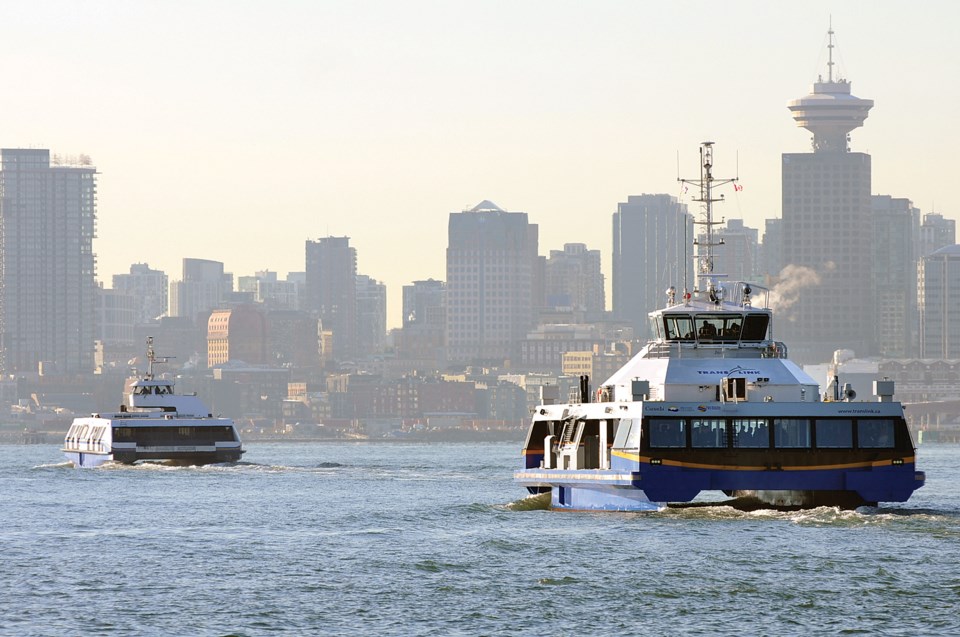It’s all aboard for the newest addition to TransLink’s SeaBus fleet.
There wasn’t a bottle of champagne to smash on the bow but rather a carafe of Starbucks for dignitaries to sip on for the launch of the Burrard Otter II Dec. 1.
The new vessel cost $21 million to build, $19 million of which came from the federal Gas Tax Fund. The rest came from the TransLink capital budget.
The Otter II was built at a Singapore shipyard owned by Dutch firm Damen Shipyards Group, which beat North Vancouver’s Allied Shipyards’s bid by $2 million.
The Burrard Otter II uses less fuel and produces 20 per cent less carbon dioxide than its predecessor. It also offers taller and wider doors, which should lead to faster loading and unloading and easier access for people with mobility challenges. Its windows, front and back, are larger and there are more fold-up seats to make room for bicycles and strollers. It also has stabilizers for smoother sailing.
But for all its improvements, the new SeaBus won’t mean more frequent service, at least not without voters’ approval in the upcoming TransLink referendum, said District of North Vancouver Mayor Richard Walton.
Now that the Otter II is on the water, the 1977 Burrard Beaver will be retrofitted and the original Burrard Otter will be decommissioned for parts.
“You need three that are in robust operating condition in order to be able to run two, seven days a week for those kinds of hours,” Walton said.
“This provides us with a lot more guarantee that the system won’t be interrupted. We’ve always been vulnerable to one having a major problem and not being able to maintain the level of service in rush hour.”
Lower Mainland mayors will soon release the referendum question that voters will weigh in on, which should lay out what new sources of funding will be used to pay for more transit infrastructure as the region grows. Should voters give approval to the plan, which could include a vehicle levy, regional carbon or sales tax in the short term and long-term road pricing, the North Shore would get 10-minute SeaBus services in rush hour and 15-minute service in off-peak hours and weekends as well as B-line bus service linking North Shore transit hubs with Burnaby, the SeaBus terminal, downtown Vancouver and West Vancouver.
“Now the capital is in place and this is built, the next step is to make sure you’ve got the operating funding,” Walton said. “A successful referendum plus this vessel gives us that capacity to increase those hours for North Shore residents.”
The SeaBus carries an average of 16,600 passengers per day and is unaffected by snow, ice or traffic on the Lions Gate Bridge and Ironworkers Memorial Second Narrows Crossing, but it too suffers from congestion and sailing waits, Walton said.
The most frequent comment made by riders on the maiden voyage was how much better the sea, mountain and cityscape views are compared to the predecessor.
“It’s nice,” said 10-year-old North Vancouver resident Trevor Sutherland. “The bridge windows are way huger.”
[email protected]
twitter.com/BrentRichter



